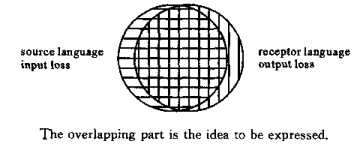- 签证留学 |
- 笔译 |
- 口译
- 求职 |
- 日/韩语 |
- 德语
There are people who compare oral translation to photography. The author would argue that it is much the same as drawing. When taking a picture, we take down everything shown in the lens. Although we can focus on a certain object or a person, we cannot get rid of the unnecessary details. A picture is just a copy of something real. However, drawing is an art with which the painter transfers something realistic to the canvas. He/She is free to decide what is worth drawing and what is not. The case is similar in oral translation.
During oral translation, interpreters are exposed to various sorts of materials which they have to deal with instantaneously. They can not make up what they have missed in the first instance nor can they reorganize the interpretation afterwards, In the course of their work, they are bound to suffer some loss of information both in source language input and receptor language output. Hence, no interpreter, no matter how experienced he/she may be, can he expected to produce a "perfect" rendition in doing interpretation of complex speeches or debates.
Inexperienced interpreters, for fear of missing the original speech, are prone to stick to a word-for-word/word-by-word approach. They try to take in everything the speaker says, yet are not fully aware which are the major points and which are the minor points. Consequently, the word-for-word approach gets them nowhere.
In contrast to the new hands, veteran interpreters demonstrate great maturity. If we compare the focus of a speech to a "watermelon" and the minor points as "sesame seeds", then they are the people who know how to pick up the "watermelon" first. They have concluded, after much frustration experience, that the brain mechanism of an interpreter functions as a filter through which the main idea is retained with the minor /irrelevant points discarded. This can he shown in the following figure.

Let's take the following paragraphs as examples.
1) Few can deny the strange coincidences in the deaths of John F. Kennedy and Abraham Lincoln. For example, Kennedy was elected in 1960 while Lincoln assumed the Presidency in 1860. Both men were assassinated from behind, on a Friday, and in the presence of their wives. The two men were born exactly one hundred years apart, as were their assassins, Lee Harvey Oswald and John Wilkes Booth. Perhaps the strangest coincidence is that Kennedy's secretary, whose name was Lincoln, advised him not to go to Dallas where he was shot. Lincoln's secretary, whose name was Kennddy, advised him not to go to the Ford Theater where he met his death.
While hearing it, the interpreter should keep in mind:
• names of the two presidents assassinated,
• date of assassination,
• the two men born exactly 100 years apart as were their assassins,
• the key word in this paragraph - COINCIDENCE.